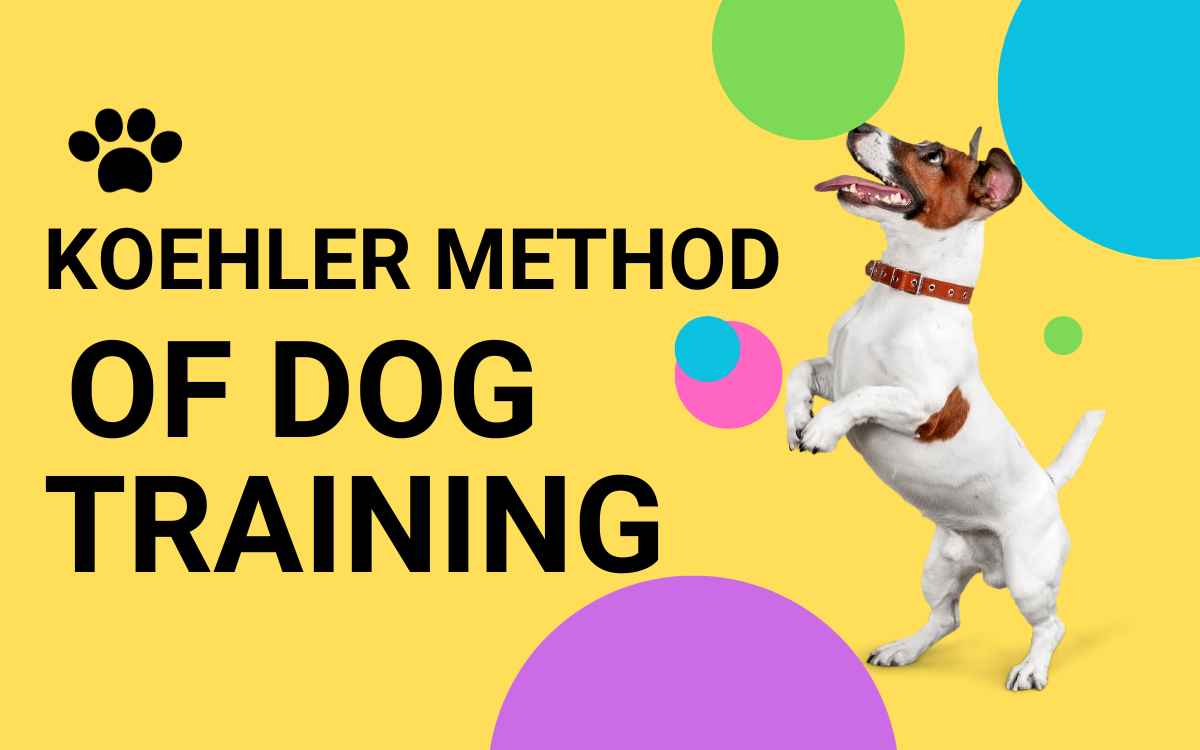Are you tired of your dog constantly misbehaving and not listening to your commands? Look no further than the Koehler method of dog training. This revolutionary approach to training is based on the principles of clear communication, consistency, and positive reinforcement.
Developed by William R. Koehler in the 1940s, this method has been proven effective in transforming even the most stubborn dogs into obedient companions. Whether you have a rambunctious puppy or an older dog with behavioral issues, the Koehler method offers a comprehensive and structured training program that will help you establish a harmonious relationship with your four-legged friend.
The Koehler method involves teaching dogs basic commands such as sit, stay, come, and heel using a combination of verbal cues, hand signals, and physical guidance.
It also incorporates correction-based techniques to address unwanted behaviors such as jumping or pulling on the leash. The goal of this method is to train dogs to be well-behaved and responsive to their owners’ commands in various situations.
Table of Contents
The Koehler Method of Dog Training
Another notable feature of the Koehler Method is its focus on off-leash control. It aims to train dogs to respond reliably to commands even in distracting environments without relying on physical restraint. This method teaches owners how to establish themselves as leaders and effectively communicate with their dogs, resulting in a more harmonious relationship.
The origins of the Koehler method of dog training
The Koehler method of dog training was developed by William R. Koehler, a well-known dog trainer and author. It originated in the 1940s and gained popularity due to its effectiveness in training working dogs, such as police and military dogs.
Understanding the principles behind the approach
Dog training is based on a few key principles that help establish a positive and effective approach. One principle is the use of positive reinforcement, which involves rewarding desired behaviors with treats, praise, or playtime. This helps to motivate the dog and encourages them to repeat those behaviors in the future.
Key techniques used in this training method
There are several key techniques used in dog training that have proven to be effective. One of the most important techniques is positive reinforcement, which involves rewarding your dog with treats or praise when they exhibits desired behaviors.
This helps them understand what behaviors are expected of them and encourages them to repeat those behaviors in the future.
Criticisms and controversies surrounding the Koehler method
One major criticism is that it relies heavily on punishment-based techniques, such as leash jerks and physical corrections. Some argue that this approach can be harsh and potentially harmful to dogs, leading to fear or aggression.
The controversy surrounding the Koehler method is its focus on obedience rather than building a strong bond between the dog and owner. Critics argue that this approach may result in dogs obeying out of fear rather than trust and understanding.
Success stories and benefits of using this approach
One success story of using this approach of dog training is with a rescue dog named Max. Max was fearful and had a history of aggression towards other dogs. Through positive reinforcement training, his owner was able to gradually expose him to other dogs in a controlled and positive environment.
Over time, Max’s fear and aggression diminished, and he became more social and friendly with other dogs. This approach not only helped Max overcome his fears but also improved his overall behavior and quality of life
Conclusion: Is the Koehler method right for you?
In conclusion, the Koehler method can be an effective training approach for some dogs, particularly those with a strong drive and desire to please their owners. It emphasizes clear communication, consistency, and positive reinforcement to achieve desired behaviors.
However, dog owners need to consider their individual dog’s temperament, needs, and sensitivity when deciding on a training method.
Some dogs may not respond well to the more assertive techniques used in the Koehler method and may require a gentler approach. Before implementing any training method, it is always recommended to consult with a professional dog trainer or behaviorist who can provide guidance based on your dog’s specific needs.
Ultimately, the goal is to find a training method that helps your dog reach their full potential while building.
Also, Read this related article. When to hire a dog trainer?
FAQS
What is the dog training method called?
The dog training method is commonly referred to as positive reinforcement training. This method focuses on rewarding desired behaviors rather than punishing unwanted behaviors. It involves using treats, praise, and other rewards to reinforce good behavior and encourage the dog to repeat it.
What is the best dog training method?
The best dog training method can vary depending on the individual dog and their specific needs. However, positive reinforcement training is generally considered to be one of the most effective and humane methods. This involves rewarding desired behaviors with treats, praise, or playtime while ignoring or redirecting unwanted behaviors.
What is the most popular dog training method?
The most popular dog training method can vary depending on individual preferences and goals. However, positive reinforcement training is widely recognized as one of the most effective and humane approaches. This method focuses on rewarding desired behaviors with treats, praise, or playtime while ignoring or redirecting unwanted behaviors. It promotes a strong bond between the owner and the dog and encourages them to learn through positive experiences.
What are the 7 basics of dog training?
The 7 basics of dog training are essential principles that can help you establish a strong foundation for training your furry friend. These basics include consistency, positive reinforcement, patience, timing, clear communication, socialization, and repetition.
What is negative punishment for dogs?
Negative punishment for dogs is a training technique that involves taking away something the dog finds rewarding or desirable to decrease or eliminate unwanted behavior. This can be done by removing attention, treats, toys, or access to certain areas.
What is R+ in dog training?
In dog training, R stands for reinforcement. Reinforcement is a technique used to strengthen desired behaviors in dogs. It involves providing rewards or positive consequences immediately after the dog performs the desired behavior. This can include treats, praise, petting, or playtime. By reinforcing good behavior, dogs learn to associate that behavior with positive outcomes and are more likely to repeat it in the future.










